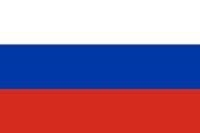
Protective coatings: A highly competitive market
2024-03-18 08:48
The market for protective coatings is projected to grow from EUR 13.4 billion in 2023 to EUR 15.9 billion by 2028, at a CAGR of 3.5%, during the forecast period. How is the market currently shaped By Chirag Tripathi, Atul Yadav and Surabhi Patankar, Markets and Markets.

The Asia Pacific region encompasses a diverse range of economies with different levels of economic development. The region accounted for 53% of the total revenue share of protective coatings in 2022, in terms of value. The growth of the region is majorly attributed to the development of civil building and infrastructure, marine, and power generation industries, and across industries such as consumer goods and appliances, building and construction, and furniture. The advantages of shifting production facilities to the Asia Pacific are the low cost of production, availability of skilled and cheap labor, and the ability to better serve the local emerging markets.
Epoxy resin is among the largest segments of resins used in protective coatings
Epoxy-based protective coating is the largest segment in the overall protective coatings market. The properties of epoxy-based coatings can be enhanced by adding additives and modifiers to meet the required specifications. Epoxy coatings are best known for their outstanding hardness, mechanical resistance, and resistance to humidity, abrasion, water, acid, alkali, and seawater. They possess low volatility and are water cleanable. These properties make these coatings ideal for use in metallic surfaces, such as cast iron and aluminum, and an ideal protective coating material for components in industrial settings.
Epoxy-based coatings are also applied on floors, for example, they are commonly used to extend the life of concrete floors in industrial facilities, warehouses, logistic centers, and other locations that are prone to heavy foot and vehicle traffic. Their resistance to attack from chemicals, such as those found in oils, cleaners, and bleach, leads to its usage in the various industries.
China and India leading growth
China is the largest, while India is the fastest-growing market for protective coatings in the region. The easy availability of raw materials and high demand from end-use industries are driving the market in Asia Pacific.
China is not only dominates the regional market but the global market of the protective coatings as well. It is the leading producer and consumer of anti-corrosive protective coatings due to rapid industrialization and increased applications in the marine, oil & gas, and infrastructure sectors. The market in China is also driven by the rise in demand from housing activities, new construction and renovation activities, government and private investments in residential and non-residential projects, and growth in consumer spending power along with the availability of cheap labor and accessibility to cheap raw materials.
India is the fastest-growing protective coatings market in Asia-Pacific. It is still a highly price-competitive market, and low compliance to government norms is a key factor driving the growth of protective coatings in the country. Trade agreements with countries such as the USA, Australia, China, the UAE, and Japan are expected to result in companies in these countries investing significantly in India during the next five years. Other initiatives by the Government of India (GOI) include the Make in India scheme to help its industries grow. This initiative focuses on 25 sectors, including automobiles, aerospace, railways, chemicals, defense, manufacturing, and packaging. The protective coatings market is projected to grow at a high rate during the forecast period as the significant economic expansion and growing construction and manufacturing sectors of the country are propelling the protective coatings market.
Growing demand from civil building and infrastructure
Protective coatings are used in the civil building and infrastructure industry for flooring, wood finishes, interior and exterior walls, bridges, swimming pools, doors, and ceilings. Protective coatings form a thin layer on the surfaces on which they are applied and are used for increasing the longevity and stability of the structures. Bridges, highways, and infrastructure projects are essentially in the need of long-time stability and the ability to withstand harsh weather conditions, for instance, acid rains. Degradation of structures results in rusting of metal surfaces, fading, cracking of concrete, leakages, and growth of micro-organisms, such as algae and fungi. These may directly or indirectly affect the life of buildings and increase the cost of replacement and maintenance. Waterproofing coatings are usually applied to walls and floorings in bathrooms, kitchens, hotels, and swimming pools to prevent leakages and avoid moisture from deteriorating the structures. The infrastructure and construction industry is growing rapidly in the Asia Pacific region. Asia Pacific is one of the largest and fastest-growing markets for the civil building and infrastructure industry.
Future trends and disruptions
The protective coating market is a highly competitive and dynamic industry experiencing significant changes in recent years. The changes have been led by various factors, including changing consumer preferences, technological advancements, and regulatory pressures. Companies that can alter to these changes and innovate their products and processes are expected to succeed in this dynamic and competitive market.
Reading tip
The EC Tech Report Waterborne Protective Coatings gives you an extensive up-to-date bundle on protective coatings, focusing on water-borne solutions, with articles, videos and other content handpicked by the European Coatings Team. In addition to cutting-edge technical articles, the Tech Report is rounded off with valuable market insights and key fundamentals on water-borne protective coatings.
More Hzinfo
- Recommended products:R-gen®919丨the only liquid photoinitiator commercially available for black UV systems
- R-gen® 919 is a novel photoinitiator introduced and is the only liquid photoinitiator commercially available for black UV systems.
-
2025-01-15
- Recommended products:TR 5262 Crack Resistance Fatigue Tester
- It evaluates the ability of surface coatings to resist damage caused by concrete cracking.
-
2025-01-14
- CEPE Disagrees with Decision on TiO2 Antidumping Duties
- Tariffs on Chinese imports threaten viability of many EU paint makers.
-
2025-01-14


 English
English 简体中文
简体中文 Русский
Русский إنجليزي
إنجليزي